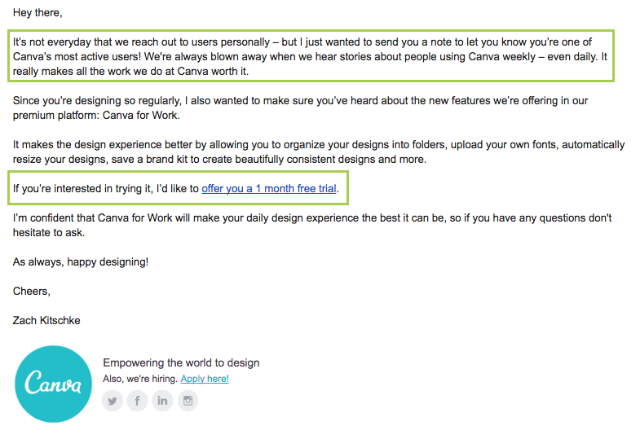 Eliza Gniadek
created
Eliza Gniadek
created
How to improve the B2B sales funnel with email marketing
Back to list of articlesDo you work in B2B and want to jump-start the way you gain customers? Email marketing is just what you need. It’s one of the most simple and effective tools for building business relationships. A well-designed strategy can make it possible for you to react to customer behaviour at every step in the B2B sales funnel.
The sales funnel
The purpose of sales funnels is to illustrate the stages that recipients go through starting with knowledge of your offer until they become a regular customer. The stages and the organisation of the sales funnel can vary depending on the industry.

Let’s take a look at the main stages in gaining new customers, what goals you should have for each of them and how email marketing can help in turning anonymous recipients into loyal customers.
1. Introduce yourself
Generating leads and turning them into customers starts here. No matter what field you operate in, there’s a huge number of people who have never heard of you and your business and your product or service. You need a way to reach these people to communicate what you can do for them and how they can benefit from your business. This means you need a comprehensive, multichannel marketing operation.
Depending on your needs, you might work online, offline or both. Use different kinds of content and marketing methods to reach the greatest number of INTERESTED customers in your field.
One of the ways to reach new potential customers is through email marketing campaigns to an external database.
Goal:
You primary goal at this stage in the sales funnel is reaching new potential customers who are not familiar with you and your brand.
How to use email marketing:
To reach people who aren’t aware of your business or what you have to offer, use an email campaign with an external database with an emphasis on the right target group. Use the message to describe what you do and how you can help recipient meet their business needs. Invite them to get in touch or suggest additional benefits in exchange for staying in contact.
2. First signs of interest
When you’ve delivered your message to potential partners or customers, you’ll be tempted to prepare yourself for an avalanche of questions and newsletter signups. But don’t be surprised if it doesn’t work out that way…
Interested customers won’t necessarily share their contact information with you because this is valuable information that they won’t give so easily. You may have to encourage with something more to persuade them.
To change a recipient who now knows about your business and offer into a potential customer, encourage them to share their contact information with you through the value that they will receive by staying in contact.
Goal:
At this stage of the sales funnel your goal is to generate leads, contact from interested customers who want to learn more about you and your offer.
How to use email marketing:
Now, when your’e still without your own subscriber database, the best solution is another campaign to an external base. This time, though, use only those addresses that responded to the previous mail by opening it or clicking on a link inside.
In this message, encourage recipients to sign up for your newsletter or send some kind of offer with added value that, depending on the field, could be in the form of an ebook or a discount.
See also:
3. First contact
When your offer is attractive and interesting enough to get more engagement from recipients, you need to know how to deal with them. When you meet clients in person, it’s obvious that you greet them and it’s no different in email marketing. Make a good impression and welcome new subscribers with an autoresponder thanking them for joining you and a reminder of all that you have to offer.
Goal:
The first goal at this stage is eliminating address errors by using the double opt-in model for anyone who joins your database. The second goal is to enhance your image with automatic welcoming messages and to expose customers to more information about you.
How to use email marketing:
When recipients share an address with you by, for example, joining your newsletter, that’s their first point of personal contact with your brand. That’s why it’s a good idea to welcome them with an autoresponder for new subscribers, thanking them for their interest and assuring them that you are ready to meet their needs.
In the mail, add more information about how your business works and what customers can expect. Also, include invitations to explore other channels of communication like your social media pages.
When a subscriber submits a question through an online form, arrange for an autoresponder to reply and them for their inquiry and assure that you will be answering soon. This confirms that you got the message and shows professionalism on your part.


4. Generating leads
This can also be referred to lead nurturing. When you make email contact with a potential customer, it doesn’t yet mean that he’s ready to buy your product or start working with you.
Lead nurturing helps you adapt content to the needs and expectations of subscribers, educate them about your offer and show them why it’s worth following your newsletter.
With time, this activity can bring these subscribers closer to the point where they are ready to start a deeper level of cooperation with you.
See also:
Using lead nurturing means focusing on precise segmentation of leads and adapting communication for different leads.
Lots of people who signed up for FreshMail’s newsletter or who took part in an email marketing workshop haven’t yet started using our system. We provide them with educational content that explains how email marketing can benefit them and how to use it effectively.
It’s important to keep an eye on the actions of subscribers and look for moments when their interest in a product increases, like when they open an account or get in touch with the sales department. These customers should be placed in a different segment that delivers content that is more focused on the product.
Aleksandra Adamczyk, Customer Relationship Manager @ FreshMail

Goal:
It’s time to focus on educating subscribers and maintaining the credibility of your company as a trusted business partner. Your goal is to change subscribers into customers, to lead them to purchase a product or service with a strategy based on education and proper segmentation of the database according to degree of engagement.
How to use email marketing:
To keep contact with subscribers, send cyclical newsletters that not only describe your business but also offer valuable and useful content. If the value is clear, subscribers will engage with your message. The better they know you, the more willing they will be to work together.
Divide your mailing list according to the degree of engagement in terms of how frequently subscribers open your mails and click on links and send more interested subscribers special, more sales-oriented content.
You can also send subscribers a mail with an offer to try your product or service, perhaps in a trial form.

5. One-time purchases
So now the big moment finally comes when the goal of the sales funnel is reached - the customer decides to make a purchase or agree to a deal. It’s time to take special care to ensure that the purchasing process goes as smoothly as possible and the you meet all the expectations of the customer while not giving him any reason to change his mind.
It can happen that the customer isn’t ready yet to make a final decision and chooses to try the product out first. Good options for this are opening a free account or taking advantage of a free trial.
Goal:
Your goal here is to move things along towards conversion and monetize the relationship. When you reach this point, make sure the payment process is easy and straightforward.
How to use email marketing:
Just after a transaction is made, use autoresponders to send a thank-you note along with some additional information about the purchase.
In the case of customers trying a trial version, send a message about halfway through to the time when it expires to remind them of the upcoming deadline.
If you offer a free account (with limited functionality), use email to inform customers about the benefits of the paid plan and the extra features they can enjoy. This is especially true for frequent users of the free plan:

6. After the purchase
Finalising a sale or signing a contract doesn’t mean your work is done. Now it’s time to work on keeping your new customer happy. Satisfied customers that feel like their needs are being met will come back, buy more and perhaps even recommend you to others.
Goal:
Build customer loyalty through keeping them engaged and focused on your brand.
How to use email marketing:
Keep in touch with customers through the content you provide through your newsletter. Using mailing list segmentation, you will be able to easily select customers who have purchased something and are engaged with your email campaigns through opening your messages and clicking on links. Target this group with special offers to use, for example, new functionalities and updates or better conditions of cooperation. Reward loyalty and send regular customers valuable content only for a select few.
You can also ask customers to share their opinions about their purchases. Send out surveys and get feedback about their experiences with your brand. This shows that you value their input and are committed to excellent customer support while keeping up with the demands of the market.
See also:
The bottom line
The different stages of the sales funnel demand different strategies. The actions you need to take at one point in the process are very different those in another. You interact with completely new customers differently than you do with others who have been your partners for some time. Using email marketing throughout the process allows you to deliver the right content at the right time so you can guide customers along a path to conversion.


